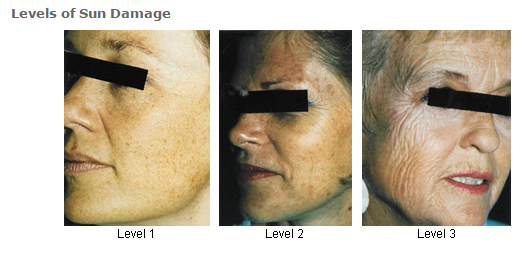Skin Doctor SA offers Adelaide’s widest range of treatments for ageing and damaged skin.
- Medical-strength Laser Treatment
- IPL Treatment
- Radiofrequency Micro Needling Technology
- Cosmetic Mole Removal
- Photodynamic Therapy
- Anti-wrinkle injections
- Dermal Filler Injections
- Pharmaceutical Skin Therapeutics
Aging is a dynamic process. As we age, certain histologic changes occur in our skin. These changes are induced by either intrinsic (chronologic) aging or extrinsic (environmental) aging.
Chronically aged skin loses the scaffolding of the structural proteins elastin and collagen in the dermis, and the epidermis becomes thin, causing the skin to appear loose and wrinkled. There is atrophy of adnexal structures (sebaceous and sweat glands) with a decrease in oil-secreting glands and the skin’s moisture-retaining ability, resulting in dryness and scaling. Continued loss of elasticity results in sagging, jowls, and deep furrows. Sun damage (photoaging) compounds the structural changes by accelerating aging with even more pronounced wrinkling, as well as pigmentary changes resulting in mottling and freckling.
Intrinsic aging changes are an inevitable part of the natural aging process of everyone’s skin. The severity of some elements of chronologic aging may have a genetic basis, allowing some people’s skin to age better than others. However, the most dramatic changes seen in aging skin are due to extrinsic causes.
By far the most significant environmental factor responsible for extrinsic aging is sunlight. The cumulative damage created by chronic ultraviolet (UV) light exposure (‘photoaging’), can easily be seen by comparing the sun- exposed skin on the anterior chest with the sun-protected skin on the breast.

Levels of sun damage
Histologically (at the microscopic level), the changes seen in photodamaged skin are:
- A thickened, rougher stratum corneum (the scaly, dry surface layer of the skin)
- A thinner, more atrophic epidermis
- Epidermal atypia (altered, damaged cells and tissues)
- Irregular dispersion of melanin throughout the epidermis (called dyschromia)
- Decreased glycosaminoglycans in the dermis (the gel between the epidermis which gives young skin its softness and fullness)
- Abnormal-appearing elastic fibres in the dermis
- Reduced collagen fibres
Collectively, these changes produce skin which is thin, mottled and wrinkled. The goal of treating photodamage is to reverse these changes in the skin. Therefore, our goal is to create
- A thinner, more compact stratum corneum by lifting off the dry scaly outer layer
- A thicker, less wrinkled epidermis with a uniform dispersion of melanin
- Increased deposition of new collagen and glycosaminoglycans in the dermis
Pharmaceutical skin therapeutics
Pharmaceutical skin therapeutics refers to topical skin repair treatments you can apply yourself. Those used in our clinic are of prescription-only strength because of their scientifically-proven mechanism of action and efficiency.
Skin Doctor SA has developed its own skin repair products, based on recent peer-reviewed dermatological, therapeutic and scientific principles.
These products are designed to enhance and maintain the results achieved by our broad range of treatments but are also very effective in their own right as agents of skin rejuvenation and repair.
The Doctors will discuss with you the details of each treatment, bearing in mind efficiency and safety, and decide on the most appropriate treatment for you.
